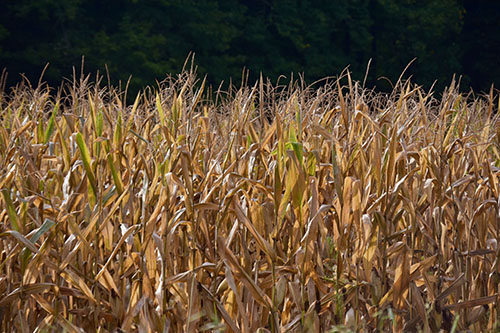Harvest Forecast
Oct 04, 2021

Reports compiled by Julia Austin, GreenPoint Ag Marketing Manager – Digital Experience
As of press time (Sept. 15), Tennessee producers are expecting a successful harvest for 2021. Based on a Sept. 13 report from the U.S. Department of Agriculture’s National Agricultural Statistics Service (NASS), Tennessee
corn, soybean and cotton yields are on track even after wet weather due to
Hurricane Ida’s landfall and unforeseen flooding in August.
As of press time, Tennessee corn was 59 percent mature; 23 percent of Tennessee soybeans were dropping their leaves; and 27 percent of Tennessee cotton bolls were opening. See more information below regarding Tennessee’s regional yields from GreenPoint Ag Member Service Representatives.
Trevor Smith – West Tennessee
Grain yields in West Tennessee are encouraging. Late season disease came in on several corn acres; however, it had little impact on yield as the crop was in later growth stages at that time. Farmers need to keep an eye on stalk integrity, and many acres will be ready to start combining sooner than normal. Early planted soybeans are yielding well despite a short period of drought stress during flowering/early pod fill. Full season and double crop beans look exceptional and have really benefited from the late summer rains. With some later planted acres and a slow start, cotton is in a race against the clock to finish. There is a good boll load and barring, and an early frost should help to pull out some good yields on this crop as well.
Cole Delong – Middle Tennessee
Harvest is beginning in Middle Tennessee. Yields are looking good, and it appears corn may be the bumper crop for the region. Soybean yields are looking average to high, and double crop soybeans look really great due to the late season rains. There weren’t too many disease issues this year, other than some sudden death syndrome (SDS). Forage yields have suffered this year due to limited rain in the region and armyworm infestations.
Ben Gilbert – East Tennessee
Corn yields in East Tennessee are all over the board. Southeast Tennesseans are seeing some really good yields – even record-breaking; however, upper East Tennesseans’ corn has suffered due to lack of rain. Early planted soybeans have struggled due to lack of rain as well, but later planted beans were able to utilize late rains and should yield well. Forage yields in the region are off due to the late freeze and dry spring and summer. Late rains in August will make the final cutting somewhat decent, but not enough to offset the loss from early spring.
For more content like this, check out the latest issue of the Cooperator.
As of press time (Sept. 15), Tennessee producers are expecting a successful harvest for 2021. Based on a Sept. 13 report from the U.S. Department of Agriculture’s National Agricultural Statistics Service (NASS), Tennessee
corn, soybean and cotton yields are on track even after wet weather due to
Hurricane Ida’s landfall and unforeseen flooding in August.
As of press time, Tennessee corn was 59 percent mature; 23 percent of Tennessee soybeans were dropping their leaves; and 27 percent of Tennessee cotton bolls were opening. See more information below regarding Tennessee’s regional yields from GreenPoint Ag Member Service Representatives.
Trevor Smith – West Tennessee
Grain yields in West Tennessee are encouraging. Late season disease came in on several corn acres; however, it had little impact on yield as the crop was in later growth stages at that time. Farmers need to keep an eye on stalk integrity, and many acres will be ready to start combining sooner than normal. Early planted soybeans are yielding well despite a short period of drought stress during flowering/early pod fill. Full season and double crop beans look exceptional and have really benefited from the late summer rains. With some later planted acres and a slow start, cotton is in a race against the clock to finish. There is a good boll load and barring, and an early frost should help to pull out some good yields on this crop as well.
Cole Delong – Middle Tennessee
Harvest is beginning in Middle Tennessee. Yields are looking good, and it appears corn may be the bumper crop for the region. Soybean yields are looking average to high, and double crop soybeans look really great due to the late season rains. There weren’t too many disease issues this year, other than some sudden death syndrome (SDS). Forage yields have suffered this year due to limited rain in the region and armyworm infestations.
Ben Gilbert – East Tennessee
Corn yields in East Tennessee are all over the board. Southeast Tennesseans are seeing some really good yields – even record-breaking; however, upper East Tennesseans’ corn has suffered due to lack of rain. Early planted soybeans have struggled due to lack of rain as well, but later planted beans were able to utilize late rains and should yield well. Forage yields in the region are off due to the late freeze and dry spring and summer. Late rains in August will make the final cutting somewhat decent, but not enough to offset the loss from early spring.
For more content like this, check out the latest issue of the Cooperator.